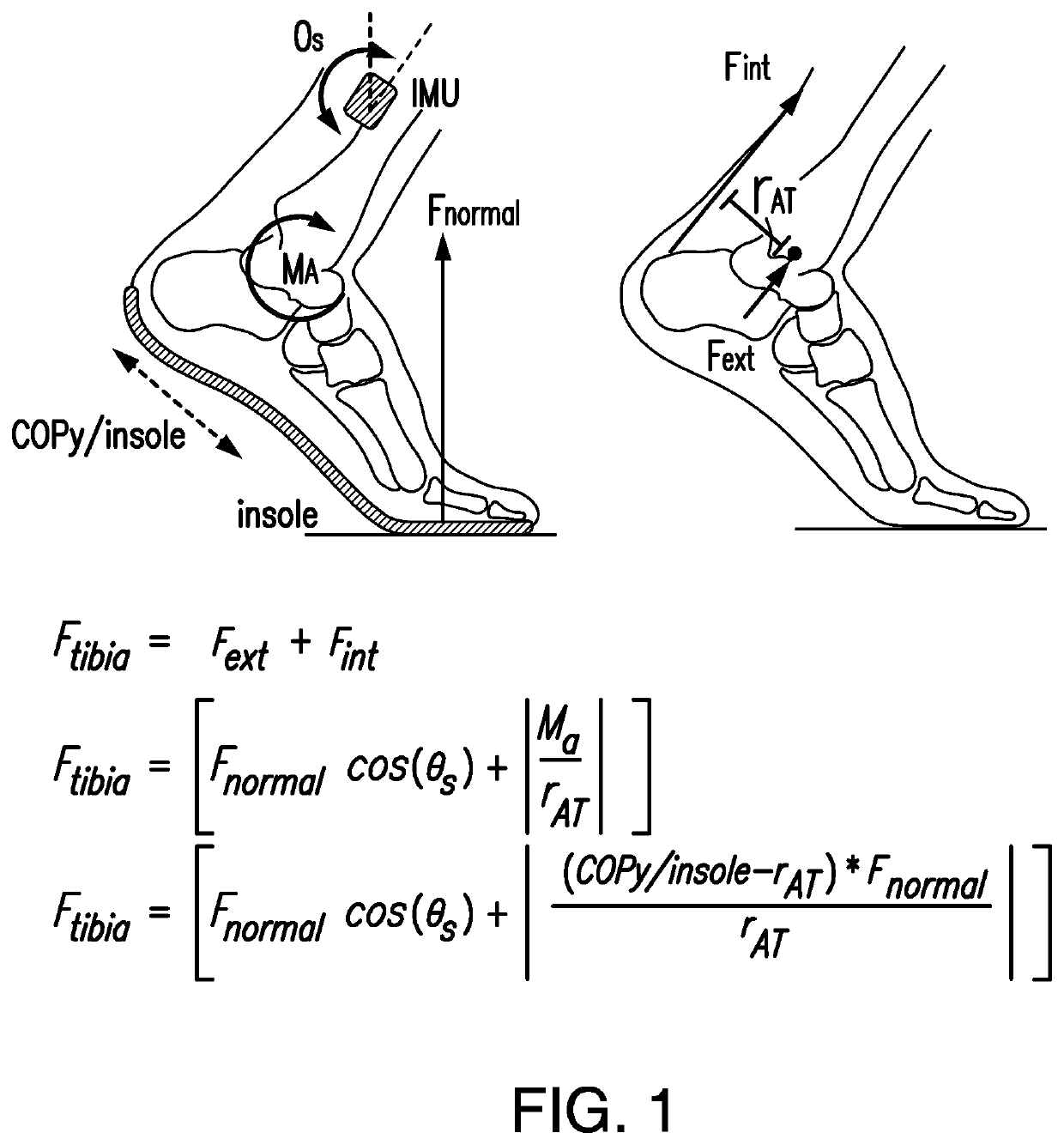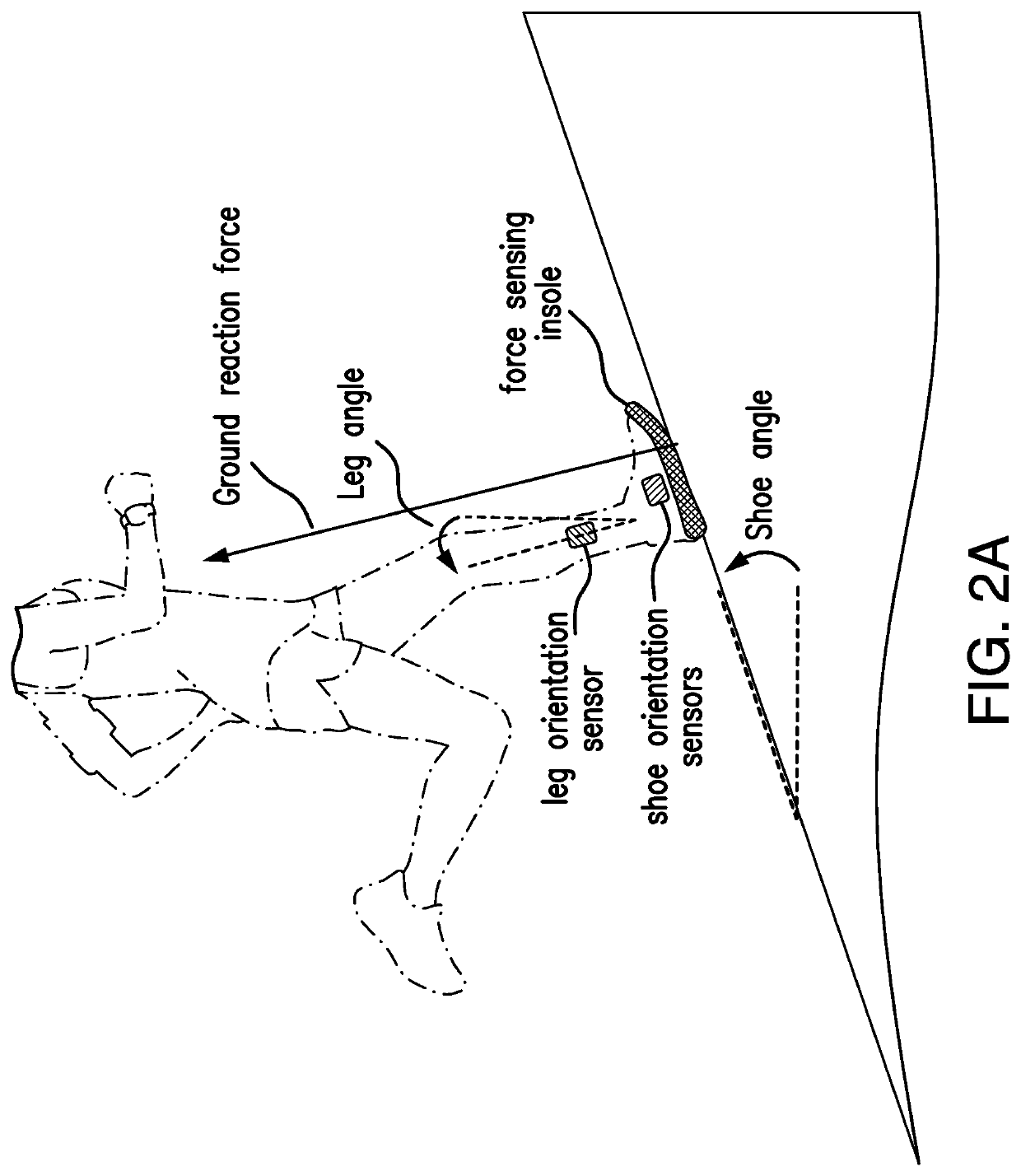Wearable device to monitor musculoskeletal loading, estimate tissue microdamage and provide injury risk biofeedback
a wearable device and load monitoring technology, applied in medical science, diagnostics, inertial sensors, etc., can solve the problems of running with staggering attrition rate microcracks in the bone, etc., to reduce injury risk
- Summary
- Abstract
- Description
- Claims
- Application Information
AI Technical Summary
Benefits of technology
Problems solved by technology
Method used
Image
Examples
example 1
Evaluating Wearable Sensor-Based Tibia Force Estimation Algorithm for Applications in Stress Fracture Reduction in Runners
Methods
A. Condition Selection
[0135]In order to assess the accuracy of wearable estimates of tibia force in different circumstances, tasks were selected to represent a range of bone loading typical in recreational running. Many conditions were tested in the experimental protocol, but for the purposes of this exemplary investigation, only tasks varying step frequency at a constant speed on level ground, and varying speeds on level ground, were analyzed.
[0136]Previous studies have found significant differences in various running mechanics metrics, including segment orientations, ground reaction force, acceleration, and leg stiffness, across different running step frequencies. Studies have shown that an increase in step frequency results in lower initial impact peaks and loading rates in ground reactions forces, lower peak ground reaction forces. More generally, incr...
example 2
Beyond Ground Reaction Forces: Towards Wearable Tech to Monitor Bone Loading and Prevent Injury
[0182]The purpose of this example was to determine if increases in GRF peaks or loading rate were correlated with increases in peak tibia bone loading during running. In the example, running and tibia bone loading were focused, because of the high prevalence of tibia stress fractures in runners. We hypothesized that increases in common GRF metrics (impact and active peaks, impact loading rate) would not be strongly correlated with increases in peak tibia loading as runners varied speed, step frequency and terrain slope (i.e., r<0.8). The absence of strong correlation would suggest the need to fuse data from additional / alternative sensors, moving beyond GRF measures, to non-invasively monitor bone loading.
Methods
[0183]Three healthy subjects (2 M, 1 F, height 1.8±0.1 m, weight 66.8±7.0 kg, age 24.6±1.5 years) have participated in this ongoing study. Subjects performed various running trials ...
example 3
Wearables and Injury Prevention: Opportunities for Monitoring Musculoskeletal Loading
[0191]In the results of EXAMPLE 2 indicates that GRF metrics are not strongly correlated with tibial bone forces across a range of running speeds and slopes. In this exemplary study, data from multiple wearable sensors on the foot and shank and a musculoskeletal model were used to better estimate loading on the tibia bone. An alternative solution was explored for monitoring bone forces: integrating kinematic and kinetic data from multiple wearable sensors with musculoskeletal modelling techniques to non-invasively estimate bone loading. Our preliminary feasibility assessment indicates this multi-sensor data fusion approach can outperform conventional GRF metrics, offering a promising solution for monitoring musculoskeletal forces unobtrusively in daily life.
Methods
[0192]Ten recreational runners each performed 30 running conditions, sweeping a range of speeds (2.6-4.0 m / s) and slopes (−9° to +9°). Lo...
PUM
 Login to View More
Login to View More Abstract
Description
Claims
Application Information
 Login to View More
Login to View More - R&D
- Intellectual Property
- Life Sciences
- Materials
- Tech Scout
- Unparalleled Data Quality
- Higher Quality Content
- 60% Fewer Hallucinations
Browse by: Latest US Patents, China's latest patents, Technical Efficacy Thesaurus, Application Domain, Technology Topic, Popular Technical Reports.
© 2025 PatSnap. All rights reserved.Legal|Privacy policy|Modern Slavery Act Transparency Statement|Sitemap|About US| Contact US: help@patsnap.com



